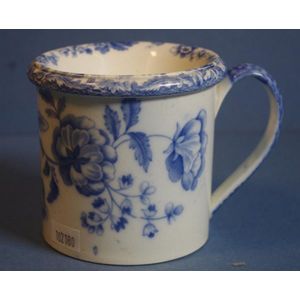Heraldic Jardiniere with Qianlong Replication
You must be a subscriber, and be logged in to view price and dealer details.
Subscribe Now to view actual auction price for this item
When you subscribe, you have the option of setting the currency in which to display prices to $Au, $US, $NZ or Stg.
- Heraldic Decoration - Heraldic decoration on silver, glass, and porcelain refers to the use of coats of arms and other heraldic symbols as decorative motifs on these materials. Coats of arms were traditionally used to identify individuals, families, and institutions, and were often displayed on shields, banners, and other objects.
The heraldic decoration typically takes the form of engraved or etched designs that incorporate coats of arms or other heraldic symbols. Heraldic decoration on silver, glass, and porcelain has a long history, dating back to the medieval period when coats of arms were first used. During the Renaissance and Baroque periods, heraldic decoration on decorative objects became increasingly elaborate and ornate, with finely detailed designs that often incorporated intricate scrollwork, mythological figures, and other decorative motifs.
In the 18th and 19th centuries, heraldic decoration became particularly popular among the aristocracy and upper classes, who used these objects as symbols of their wealth and status. - Faux - A French word meaning "false", but when used in decorative arts, the intention is not to deceive, but to simulate the decorative effects of the more expensive material it is imitating. The term " faux bois" meaning "false wood" refers to a furniture item that has been decorated with a marked grain (woodgrain finish) to imitate a more expensive timber.
This item has been included into following indexes:
Visually similar items

Late 18th century Caughley blue & white tankard, painted in underglaze blue & white floral design.

Mintons Secessionist No.36 chamber pot 26 cm wide, 12.5 cm high, hairline crack to rim

A large Chinese famille rose mug, Qing Dynasty, 19th century, the cylindrical mug of generous proportions with an applied split handle with leafy mounts, decorated to the body with trailing flora, rockwork and birds in a predominantly pink, blue, apple gre

Copeland & Garrett Spode blue & white spittoon, C1833, pattern: floral, factory mark to base (early restoration)
